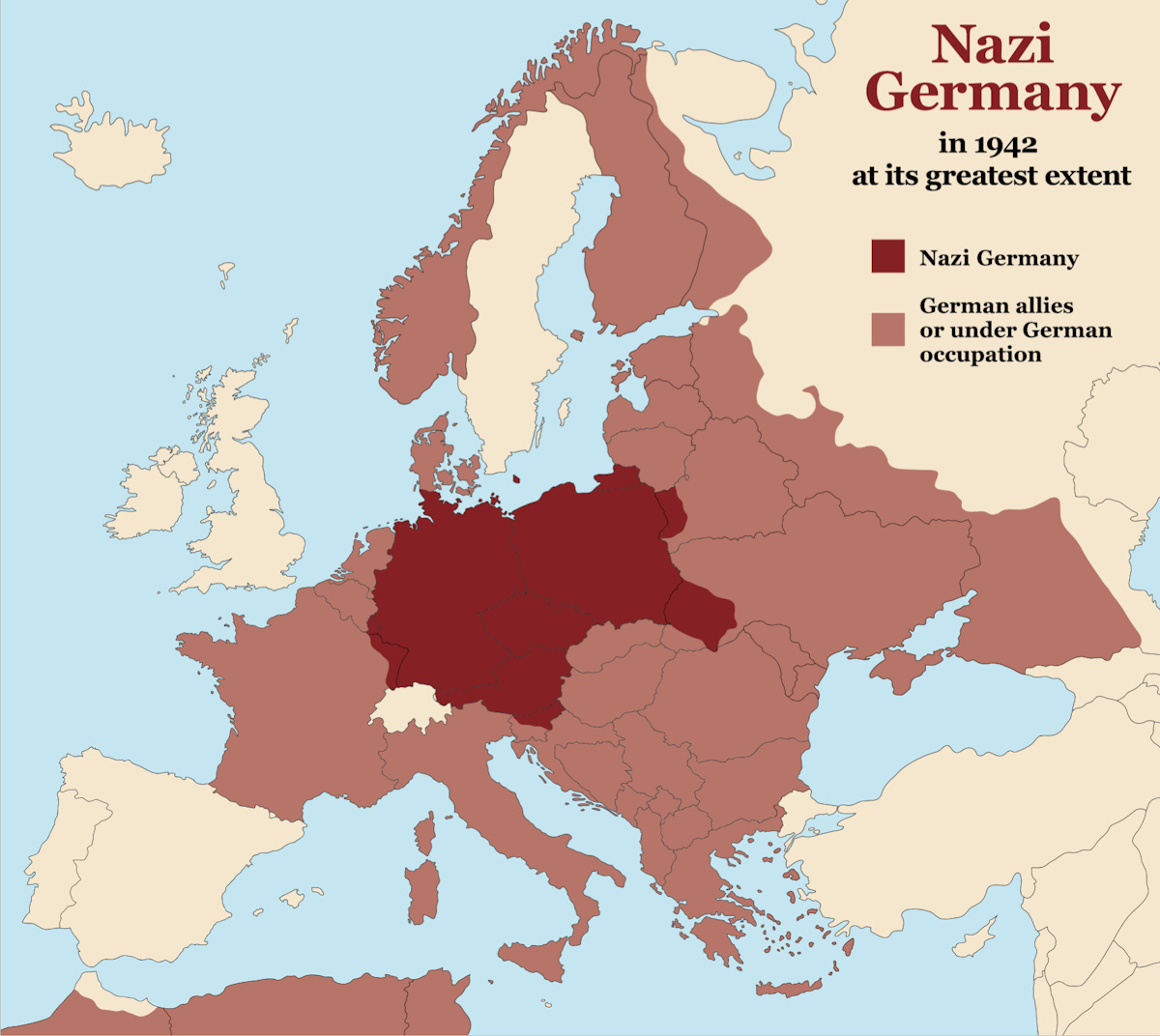Book Review of “A Brief History of the Third Reich: The Rise and Fall of the Nazis,” by Martyn Whittock, 2011. Philadelphia: Running Press. Paper, 356 pages.
Must we conquer Canada, Greenland, and the Panama Canal?
In these days with the rise of fascism, and the rise to power of some political individuals who act and speak in ways very reminiscent of Adolf Hitler, it is important to look at history. Those of us who have studied German language and culture and history see clear parallels between the actions and beliefs and plans (perhaps imminent) of current fascists who think much like Hitler did.
There are some important questions educated adult Americans need to consider at this point in history:
How similar is the annexation of Austria by Hitler to the great need to add Greenland to the ownership or protection of the United States?
How similar is taking Czechoslovakia to the notion we must acquire Canada and rename as the 51st state of our nation?
Is it essential we take control of the Panama Canal? Hitler took control of the North Sea.
Does the reach of Usono need to include all regions, waterways, and resources surrounding the continental United States?
Are we in danger of being attacked? Conquered? Are we acting in such a way that we will force even our allies and friends to wage war against us?
Or is there just one fascist movement, one would-be dictator, one uneducated Zeitgeist that is driving our doom?
The reader needs to remember this basic and clear fact: As powerful as Nazi Germany came to be, it was not the victor in World War II. Much to the chagrin of the fascists, Germany lost.
How are fascists viewed by the peoples they wish to conquer, control, and abolish? Perhaps they have their own views of would-be conquerors. Consider the following map:
Enter this important and accessible book explaining the most important—and most basic—facts about how Germans became Nazis and became responsible for their own fall. Whittock assembles here the accounts of what is what like to be a German and go through all the things that happened before, during, and after World War II. He includes stories from people coming from all walks of life, and he adds his own theories and ideas.
In 22 chapters, Whittock describes the economic, political, and spiritual life in Germany leading to the Nazis seizing power and discusses both German complacency and involvement in contributing to the party’s rise to leading the nation. Whittock talks a great deal about Hitler’s reasons and motivations leading to some of the worst decisions possible.
Hitler had a tendency to make very dramatic and quick decisions without listening to the advice of those who would try to help him, or help Germany, in times of crisis. Hitler tended to stretch resources too thin and to make decisions which caused other greater problems unforeseen.
Without giving away too much content, I will say that this book does include the strength of using so many different persons’ stories to give the reader different perspectives on how the Nazis were actually able to get as far as they did. It is important to continue to read such accounts to try to sort out what makes sense and what does not.
Whittock gives the reader a great deal of information on the concentration camps and on how they were run. He does give us a glimpse into the desperate lives of the Germans who assisted in the murders, as he does regarding all of the persons who helped Hitler come to power.
There was something in it for everyone, it appears, and Whittock attempts to explain how and why the Germans allowed the Nazis to take so much power. He also provides the death tolls and discusses the methods used for murdering the inmates.
I recommend this brief book because it puts forth the very most important facts and figures and explanations needed to get the uninitiated aware of essential elements of the Nazis. Although everyone should read and understand much bigger books about the Nazis and what they did, this book is a great start for professional development courses and for workshops to get people moving down the road. Whittock does a good job of painting a clear and basic picture of the topic. It is up to the reader, the social worker, the teacher, the street helper, and the counselor to read and study those bigger books… and those bigger perspectives and arguments so crucial to understanding more on the topics of Nazis, Hitler, fascism, war, and current events.
Though this is a short book, Whittock provides a full description of the murders and numbers. However, he also uses more contemporary examples of bloodshed such as the Rwanda murders. Maybe this is done to show that murder on a huge scale is to be expected in the world? Nothing could compare to the Nazis’ slaughter of entire peoples and communities.
Is the United States destined to be the next great dictatorship capable of—and proud of--murdering millions of people around the world? Is that our destiny? Is anyone steering the boat? Is anyone watching who steps up to steer the boat?
The reader can profit from trying to understand what happened in Germany during those say 50 years of time. Social workers, advocates, and teachers can perhaps get a little better understanding of how to begin to explain what was going on in the minds of Germans who watched all of it. This is important reading because of the different perspectives revealed here.
It is said if we do not learn from history that history can repeat itself. If we wage war against our neighbors and our allies, who will help us when we must fight our enemies?






